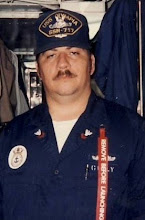Back a couple of lifetimes ago, when I was in junior high school or perhaps high school, I discovered the books of Edward
Eager:
Half Magic and
Magic by the Lake, about the magical adventures of four kids of the 1930s;
Knight's Castle and
The Time Garden, about the children of the two youngest girls from the first two books; and
Seven-Day Magic, a stand-alone book unrelated except by theme to the other four. All five books were about ordinary American kids in ordinary American towns, who somehow stumbled across real, working magic. (I've read two other books by Eager,
Magic or Not? and
The Well-Wishers, but I didn't really care for those two.)
Around the same time, I discovered the works of E (for Edith)
Nesbit. I actually first ran across her in the pages of other books, for other authors' characters seemed to make a habit of reading Nesbit. I'm not sure where I first found her mentioned - perhaps in Eager's works, or in those of Dean Marshall (the Guthrie children, from Marshall's books
*, were certainly familiar with
The Hobbit and
The Hunting of the Snark) - but I definitely recommend
Five Children and It and its two sequels,
The Phoenix and the Carpet and
The Story of the Amulet, which again are about ordinary children (English, this time) faced with real magic.

A few weeks back I wrote about five books to be released this year which I was looking forward to reading. At the top of
the list was
Any Which Wall, by Laurel
Snyder. I finally got hold of it this week - and I wasn't disappointed.
The book is about four kids in small-town Iowa - ten-year-old neighbours-and-best-friends Roy and Henry, Roy's sister Susan (twelve) and Henry's sister Emma (six). It's summertime, and they're out for a bike ride in the country when they follow a path through somebody's cornfield and find a wall, "tall as City Hall and about that wide," right in the middle of the field. Not just a wall - a wishing wall (not, of course, to be confused with a wishing
well), as they soon accidentally discover.
First things first: The kids agree to keep the magic a secret for themselves.
"Now everyone swear," Henry said. "Swear that you won't tell a soul." Henry looked at each of them one by one. "Swear!"
Susan swore quickly, with a giggle.
Emma's eyes were gigantic as she repeated after Susan. Sacrifices and swearing all in one day!
Roy appeared cool and thoughtful. "I solemnly swear," he said, "though I reserve the right to revisit this issue at a later time, since we just don't know what'll happen. Okay?"
Henry gave a brief head shake that meant "Yes, okay, sure, whatever you say, Roy" and also "That won't happen, goofball" before he went on in a rush of excitement. "And I swear too. Okay!"
Next, as is usual with this sort of thing, the kids must figure out the rules - the way the magic operates, and how to control it. This requires experimentation, of course, with mixed results, but they finally end up in Camelot and meet Merlin, who gives each of them a single glimpse of the future before going off to take a three-day nap.
From then on it's adventure time, as they travel to interesting places and meet up with the world's worst pirate, a Wild West outlaw, a unicorn, a chirky librarian and other interesting people. Some places are more interesting than others....
They were in a barn.
Henry breathed deeply and said, "Man, this place smells worse than Camelot." He sounded impressed. A goat responded by nibbling his shoe.
Susan took her hand from the wall and wiped it on her shorts. "I guess most frontier houses were on farms, so we shouldn't really be surprised, but is everything in the past smelly?"
Roy, holding his nose, answered her. "Yeah, I actually kind of think so. Indoors, anyway, since they hadn't invented air fresheners yet. If you think about it, barns in our time don't smell that great either." Just then, Emma stumbled over a chicken, and there was a great deal of squawking on Emma's part, as well as on the part of the chicken.
Things I liked: The very concept of a wishing wall - a nice variation on the familiar. A couple mentions of Edward Eager (the kids have read
Magic by the Lake). Drawings by LeUyen
Pham; I especially liked the one of the kids in the diner and the one of them washing the dog. Snyder's sense of humour, which I first encountered in
Up and Down the Scratchy Mountains, her previous book.
Things I didn't like: It's too short (though 242 pages is actually a good length for a children's novel); a sequel or two would be nice.
Any Which Wall, by Laurel Snyder. Random House Children's Books, 2009. Available from
Amazon and
Barnes & Noble, of course - though buying through
IndieBound or from your local independent bookseller is highly recommended!
* The Invisible Island, Dig for a Treasure and Wish on the Moon - which despite the titles are not works of fantasy, but are stories about ordinary kids in small-town Connecticut. Think Melendy (Elizabeth Enright) or Penderwick (Jeanne Birdsall)....Update 1912 10 Jun: This review by Charlotte includes a brief interview with Snyder, wherein she says that a sequel is in the planning stages, though nothing is definite. Jen Robinson has also written
a review.















